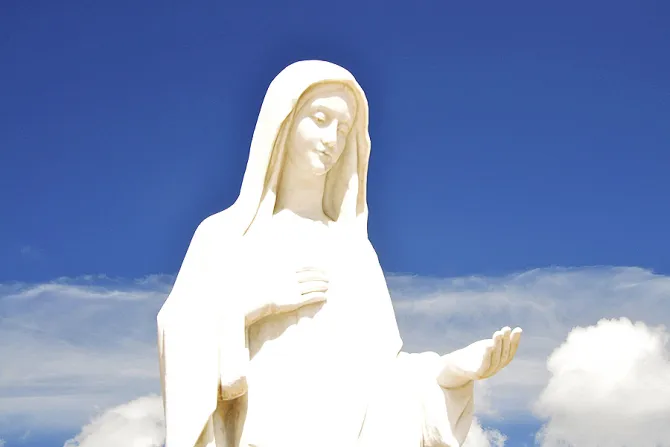CNA Staff, Oct 23, 2020 / 16:48 pm
A laicized priest who had been the spiritual director to six people who said they experienced visions of the Blessed Virgin Mary in the Bosnian town of Medjugorje has been excommunicated.
Tomislav Vlasic, who had been a Franciscan priest until he was laicized in 2009, was excommunicated July 15 by a decree of the Congregation for the Doctrine of the Faith in the Vatican. The excommunication was announced this week by the Diocese of Brescia, Italy, where the laicized priest lives.
The Brescia diocese said that since his laicization, Vlasic "has continued to carry out apostolic activities with individuals and groups, through conferences and online; he has continued to present himself as a religious and priest of the Catholic Church, simulating the celebration of sacraments."
The diocese said Vlasic has been the source of "serious scandal to Catholics," by disobeying the directives of ecclesiastical authorities.
When he was laicized, Vlasic was forbidden from teaching or engaging in apostolic work, and especially from teaching about Medjugorje.
He was in 2009 accused of teaching false doctrine, manipulating consciences, disobeying ecclesiastical authority, and of committing acts of sexual misconduct.
A person who is excommunicated is prohibited from receiving the sacraments until the penalty has been lifted.
Alleged Marian apparitions in Medjugorje have long been a subject of controversy in the Church, which have been investigated by the Church but not yet authenticated or rejected.
The alleged apparitions began June 24, 1981, when six children in Medjugorje, a town in what is now Bosnia and Herzegovina, began to experience phenomena which they have claimed to be apparitions of the Blessed Virgin Mary.
According to these six "seers," the apparitions contained a message of peace for the world, a call to conversion, prayer and fasting, as well as certain secrets surrounding events to be fulfilled in the future.
Since their beginning, the alleged apparitions have been a source of both controversy and conversion, with many flocking to the city for pilgrimage and prayer, and some claiming to have experienced miracles at the site, while many others claim the visions are non-credible.
In January 2014, a Vatican commission concluded a nearly four-year-long investigation on the doctrinal and disciplinary aspects of the Medjugorje apparitions, and submitted a document to the Congregation for the Doctrine of the Faith.
When the congregation has analyzed the commission's findings, it will finalize a document on the alleged apparitions, which will be submitted to the pope, who will make a final decision.
Pope Francis approved Catholic pilgrimages to Medjugorje in May 2019, but he has not made a deliberation on the authenticity of the apparitions.
Those alleged apparitions "still require an examination by the Church," papal spokesman Alessandro Gisotti said in a statement May 12, 2019.
The pope permitted pilgrimages "as an acknowledgment of the "abundant fruits of grace" that have come from Medjugorje and to promote those "good fruits." It is also part of the "particular pastoral attention" of Pope Francis to the place, Gisotti said.
(Story continues below)
Pope Francis visited Bosnia and Herzegovina in June 2015 but declined to stop in Medjugorje during his trip. During his return flight to Rome, he indicated that the process of investigation in the apparitions was nearly complete.
On the return flight from a visit to the Marian shrine of Fatima in May 2017, the pope spoke about the final document of the Medjugorje commission, sometimes referred to as the "Ruini report," after the head of the commission, Cardinal Camillo Ruini, calling it "very, very good," and noting a distinction between the first Marian apparitions at Medjugorje and the later ones.
"The first apparitions, which were to children, the report more or less says that these need to continue being studied," he said, but as for "presumed current apparitions, the report has its doubts," the pope said.


